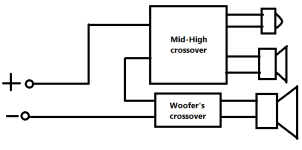Solution is to high pass the midwoofer, effectively keeping impedance nominally 4 ohm. And still you need to carefully design both woofer LP and MidW HP. Gotta simulate at least. Midwoofer sealed, woofer ported or PRed. Dayton PR should work okay for woofer without adding any weights.
If the Boston Acoustics manual was about car audio, you should keep in mind that the amplifiers used there are often designed to drive low impedances because it can be easier in a car to produce current instead of voltage. Years ago classes of competition in the US were also based around rated power into 4 ohms. If your amp could drive something like a half ohm load, you got a lot more power into the system. These were expensive amplifiers rated at low power but capable of much higher power with extreme loading. They are not the norm anymore.I found suggestion in Boston Acoustics manual . . . . will the 2-Ohm speaker systems cause any problems to home amplifier used? My amp is rated at 4-16 Ohms.
In home amplifiers, typical ones are not going to be happy driving a 2-ohm load that spans a large range in the bass. Overheating and/or shutdown are the likely results. Something like a Krell amp may do it all day long without a care, but I assume you're not dealing with an amp of that caliber.
You won't find many home speakers designed this way.
